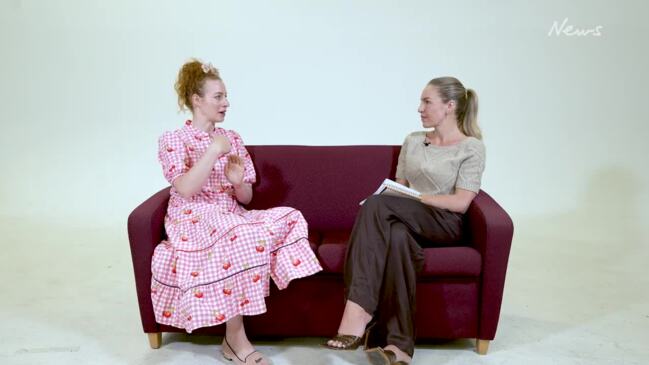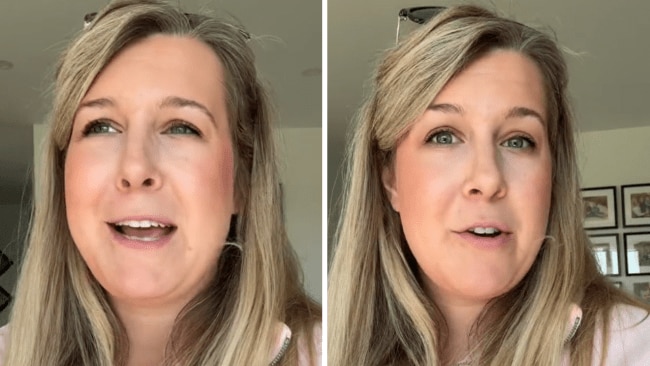'I have to watch my 17yo daughter suffer through the same disease as I do'
"There’s just not enough awareness of what it actually means or how severe the pain can be, and I hate that Bella is having to experience the same pain I do.”

Family Life
Don't miss out on the headlines from Family Life. Followed categories will be added to My News.
News.com.au is campaigning for longer, Medicare-funded consultations for endometriosis diagnosis and treatment, so women can get the help they need, no matter where they live.
Around one million suffer from endometriosis. There is no cure. Help is hard to come by and in rural or regional areas, it’s virtually impossible.
Laura Furiosi was a 20-year-old university student when she collapsed in her kitchen, halfway through trying to warm up a heat pack for the debilitating pain she was in.
She was rushed to hospital where doctors suspected appendicitis, but when they opened her up they discovered the cause was much more complex - and widespread.
Want to join the family? Sign up to our Kidspot newsletter for more stories like this.
Doctors diagnosed Laura with endometriosis, a disease in which endometrial-like tissue is found in other parts of the body.
Endometriosis is a whole body condition, not something only found in the pelvis, and it affects everyone completely differently. It affects people's ability to go to work, their ability to go to school and it affects their ability to actually function on a day to day basis.
“In terms of how quickly they were able to diagnose me, I was one of the lucky ones,” says the Brisbane mum, who is raising four teenage daughters, one of whom also has the condition.
“But they just sent me off with a pamphlet. It wasn’t until some time later that I had my first laparoscopic procedure, at which point the doctor saw how widespread the endometriosis was and refused to operate.
"I’ve been told I’d need a colostomy bag, told I’d never have children, even told I must be mistaken when I told them it was on my diaphragm as well - even though they went in and found it there too.
"It’s really a lifetime of advocating for yourself in a system where endo still isn’t very understood.”
RELATED: Bindi Irwin opens up about 'second chance at life' following surgery
"She has to go to the sick bay quite often when she is in pain"
20 years later, Laura says she’s heartbroken that Bella, her 17-year-old daughter, is essentially faced with the same fight.
Endometriosis has been a blight on the bubbly teen’s high school years, with the Year 12 student often having to miss school due to her condition not being fully understood by teachers and staff.
“She has to go to the sick bay quite often when she is in pain,” her mum Laura explains. "Once a teacher actually said to her: ‘it’s OK, you don’t have to pretend to be sick to miss school if you’re getting bullied or something.’
"There’s just not enough awareness of what it actually means or how severe the pain can be, and I hate that Bella is having to experience the same pain I do.”
RELATED: Australia’s first endometriosis and pelvic pain clinics open across the country
78 percent of students report their periods stop them from participating in activities
New research conducted at the University of Western Sydney and funded by Endometriosis Australia has found that a staggering percentage of children and teenagers have their schooling interrupted by their periods.
Lead author Dr Christina Curry from the University’s School of Education said by exploring the perspectives of students, parents and carers and teachers, the research emphasised the importance of comprehensive menstrual health education and support that addresses young people’s diverse needs and concerns.
“We know in Australia that around 90 percent of the population under 25 years of age experience regular period pain,” Dr Curry said.
“Our study found that 78 percent of students surveyed reported that their periods stopped them from participating in activities, highlighting a pressing need to implement strategies and policies to effectively support students.”
“There’s a perception that endometriosis is only something that affects fertility,” Monica Forlano, board chair of Endometriosis Australia, said.
“But it’s been found in children as young as eight years old. You’re never too young to get it, and in many cases - certainly in my case - it was incredibly painful from my very first period.
Introducing our new podcast: Mum Club! Listen and subscribe wherever you get your podcasts so you never miss an episode.
"These kids shouldn’t be suffering without diagnosis, and they shouldn’t be missing out on education opportunities.”
The research, which surveyed 296 young people (aged 13–18 years), 274 parents and carers, and 116 secondary school teachers, also found that while 60 percent of teachers surveyed taught about menstrual health in their school, only 37 percent of this cohort reported teaching on topics related to addressing period-related pain.
“Current shortfalls in education at schools identified by the report need to be addressed,” Dr Curry said.
“These include the need to enhance support for students experiencing menstrual symptoms, accommodating cultural needs, and normalising conversations and stigma about menstruation.”
RELATED: I tried the Aussie-made device that helps period, endometriosis and back pain
‘We already have the solutions - now the states need to act’
For Jess Taylor, chair of the Australian Coalition for Endometriosis (ACE), the most frustrating thing about what the research shows is that the education programs already exist - they’re simply not being implemented.
PPEP Talk® - a federally-funded, medically-accurate program targeted at high school students - has been specifically created to facilitate early education - and subsequently early intervention - for endometriosis.
“Alongside a menstrual education program for younger kids that has spun out of the program as well, PPEP Talk®, [which stands for Periods, Pain and Endometriosis Program] is teaching young people what's normal and what's not normal, and it is fundamental to understanding their bodies, and catching early signs of concern and issues - because we really don't have any other way,” Jess explains, adding that the positive impact of early diagnosis when it comes to endometriosis (a disease that currently takes an average of 6.5 years to diagnose) could be life-changing for a generation of menstruating people.
“Girls are really set up not to believe their bodies from a really young age,” she said.
"That is further affirmed as they go through the health system, as they talk with their families, as they try and have discussions with their mums or their teachers or their friends who might suggest that their pain is normal.
"They don't have anything to benchmark against, and this is what programs like [PPEP Talk] can do - provide that benchmark and hopefully save years of unnecessary pain, both physical and psychological.”
“The federal department has committed funding for this program to be taken up in every state. We have staff trained and ready on the ground to go and deliver these programs, and it’s now an issue for state governments to implement it.
"At the moment in NSW and Victoria, it’s only in private schools - it needs to be rolled out in public schools as well.”
RELATED: Endometriosis can end women’s careers - that’s everyone’s business
"It works, and it's needed"
Jess says that of the nearly 70,000 students who have been through the program, there has been a 100 percent positive response rate.
“We have the solution, and we now have the research to support the fact that it works and is needed. We also have a federal department who has already committed funding to this, we now need the states to come on board," she said.
"The people love it. The teachers love it. The parents love it. The PPEP Talk program goes out to Indigenous groups and provides yarning circles, they have an entire inclusivity talk around being conscious of gender and gender inequality - they have really attacked every single element of this.
"If it was implemented in statewide public schools, the difference it would make to people’s lives can’t be overstated.”
More Coverage
Originally published as 'I have to watch my 17yo daughter suffer through the same disease as I do'





